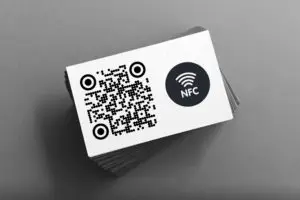Introduction:
QR codes have become increasingly popular in recent years as they provide an efficient way of sharing information, URLs, or marketing messages. However, tracking the performance of these QR codes is crucial to understand their effectiveness. While there are paid services available, you can create a trackable QR code using an existing web page with a redirect and Google Analytics without incurring any cost. In this blog post, we will guide you through the process step by step.
Step 1: Get Started with Google Analytics
If you don’t have a Google Analytics account, create one for free. Go to the Google Analytics website and sign in with your Google account. Set up a new property for your website and copy the generated tracking ID, which will be used later.
Step 2: Customize the URL
To create a trackable QR code, you need to customize the URL that the QR code will redirect to. Add UTM parameters to the URL to track the traffic accurately in Google Analytics. UTM parameters are tags added to the end of a URL, which allow you to identify the source, medium, campaign, and more.
For example:
https://www.yourwebsite.com/landing-page?utm_source=qr_code&utm_medium=scan&utm_campaign=summer_promoIn the above URL, we have added three UTM parameters:
- utm_source: Identifies the source of the traffic (qr_code)
- utm_medium: Identifies the medium of the traffic (scan)
- utm_campaign: Identifies the campaign (summer_promo)
Step 3: Set Up a Redirect
Create a server-side redirect using a .htaccess file on your web server or through your content management system (CMS). A redirect will allow you to link the QR code to the customized URL created in the previous step. The redirect should be set up to send the user to the desired landing page while preserving the UTM parameters.
For example, in Apache .htaccess:
RewriteEngine OnRewriteCond %{REQUEST_FILENAME} !-fRewriteCond %{REQUEST_FILENAME} !-dRewriteRule ^qr$ /landing-page?utm_source=qr_code&utm_medium=scan&utm_campaign=summer_promo [L,QSA]In the above example, the URL “/qr” will redirect to “/landing-page” with the added UTM parameters.
Step 4: Generate the QR Code
There are several free QR code generators available online that you can use to create the QR code image. Enter the new custom URL or the redirected URL from the previous step into the generator, and it will generate a QR code that is linked to the specific landing page with the UTM parameters intact.
Step 5: Test and Track
Before implementing the QR code into your marketing materials, test it by scanning it with a QR code reader. Ensure that the redirect works as expected and that the UTM parameters are present in the URL when arriving at the landing page.
Once the QR code is live, you can track the performance using Google Analytics. Login to your Google Analytics account and navigate to the reporting section. Go to “Acquisition” -> “All Traffic” -> “Source/Medium” to see the data for the QR code traffic. You will be able to track the number of visits, conversions, bounce rate, and other valuable metrics.
Conclusion:
Creating a trackable QR code using an existing web page, a redirect, and Google Analytics is a cost-effective way to monitor the success of your QR code campaigns. By customizing the URL and properly setting up redirects, you can integrate valuable analytics data into your QR code strategy without incurring additional costs. Remember always to test the QR code and regularly monitor its performance in Google Analytics to maximize your marketing efforts.










